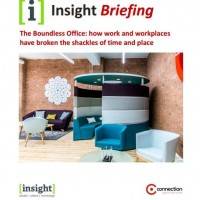March 16, 2016
Hong Kong, London and Beijing most expensive cities for office space 0
 Hong Kong is the world’s most expensive office location, followed by London, Beijing and New York.This is according to JLL’s Premium Office Rent Tracker, which compares like-for-like occupation costs across 24 cities around the world. This ranks Established World Cities such as New York and London, Emerging World Cities like Shanghai, Dubai and Mumbai, and New World Cities such as San Francisco, Boston and Toronto. The latest research shows that six of the top ten most expensive cities for office rentals are in Asia; with Hong Kong the world’s costliest office rental market on a net basis as well as including added costs such as service charges and property tax. The tracker found continued demand prime office space, despite a rise in economic uncertainty; while across the global cities, the technology, media and telecommunications sectors are moving into premium office space – previously dominated by the finance and professional services sector.
Hong Kong is the world’s most expensive office location, followed by London, Beijing and New York.This is according to JLL’s Premium Office Rent Tracker, which compares like-for-like occupation costs across 24 cities around the world. This ranks Established World Cities such as New York and London, Emerging World Cities like Shanghai, Dubai and Mumbai, and New World Cities such as San Francisco, Boston and Toronto. The latest research shows that six of the top ten most expensive cities for office rentals are in Asia; with Hong Kong the world’s costliest office rental market on a net basis as well as including added costs such as service charges and property tax. The tracker found continued demand prime office space, despite a rise in economic uncertainty; while across the global cities, the technology, media and telecommunications sectors are moving into premium office space – previously dominated by the finance and professional services sector.






































March 8, 2016
Classrooms are starting to mimic the form and function of the office 0
by Tricia McCall • Comment, Technology, Workplace design
Technology is not the only factor impacting the way education is being approached in the classrooms of today. While it’s true that many classrooms have begun to adapt to the inclusion of technology in the curriculum, there are also several “offline” options which have clearly trickled down from business design. Globally known companies such as Google and Apple have long been getting attention for the offbeat office culture they are cultivating. This trend has been fanning out into the other companies and industries as well. In-house chefs, rock climbing walls, and unconventional meeting spaces are a few of the unusual features popping up in offices all over the globe. Employers are striving to entice potential job candidates and retain their existing employees through unique and engaging environments. It may well be that the bells have already tolled for the conventional cubicle culture of the past.
More →